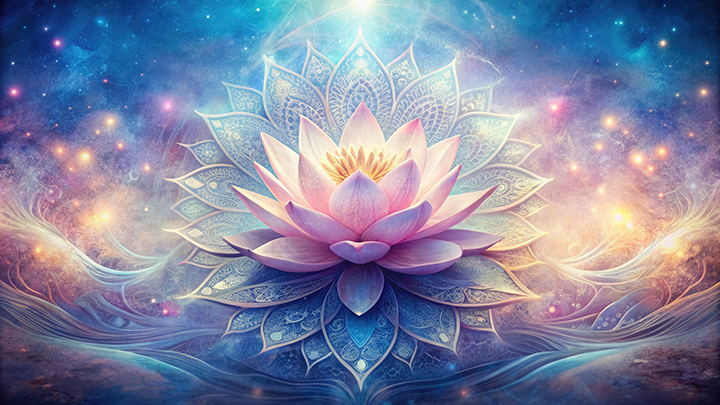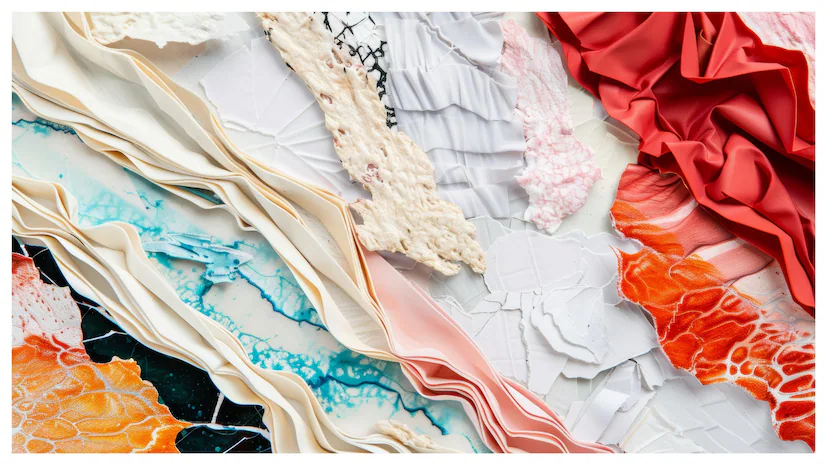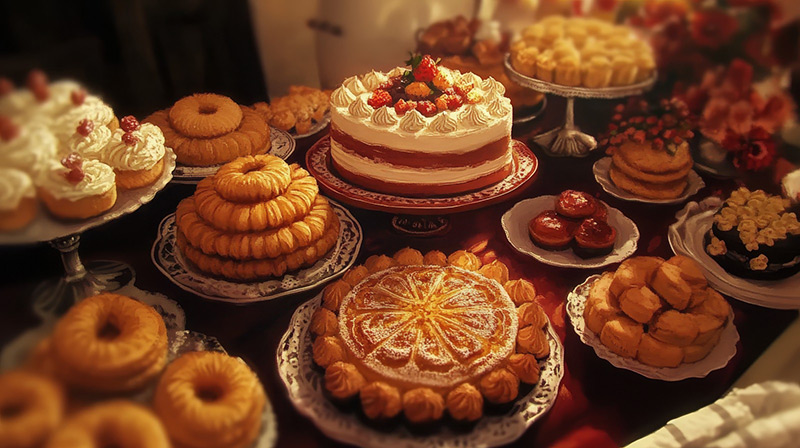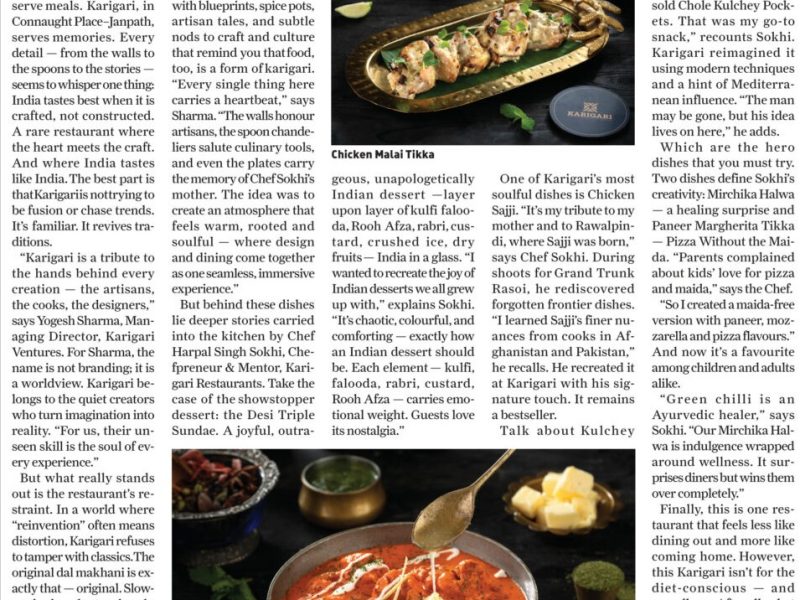Mixed media art is a big area of interest for art connoisseurs and the art world. It allows the ability to blend different media and opens up avenues for storytelling, conveying complex emotions, and addressing social and political issues
Did you know that Bharti Kher’s mixed media artwork which had bindis on life-size fibreglass elephants sold for approximately US$1.5 million at a recent Sotheby’s auction. The artwork titled “The Skin Speaks a Language Not Its Own” was a striking piece depicting a life-size female elephant covered in numerous bindis, arranged in a serpentine pattern, that added a textured and symbolic layer to the elephant’s surface. The use of bindis alluded to the Hindu concept of the ‘third eye’ and the numeral zero. Kher is fond of using resin, bindis, found objects, and hybrid creatures in her work and her mixed media installations incorporating the bindi as a recurring motif to explore identity, mythology, and gender.
Welcome to the world of mixed media art which is leaving a mark on the contemporary art world. According to Vaishnavi Murali, Founder- Eikowa, a Gurugram based art gallery- “The Indian art market is valued at over US$205 million, with publicly available sales accounting for approximately US$150 million and the gallery and dealer segment around US$ 55 million. The mixed media segment is estimated at US$ 6-10 million, with no clear breakdown by artist category. However, sales in the Rs 5 lakh- Rs 20 lakh range comprise over 70% of the mixed media market.” She adds that the Indian art market is expected to grow by 20%+ annually over the next 2-3 years, driven by both volume and price increases. Faster returns are predicted from the masters, with Indian art being increasingly viewed as an asset class by UHNWIs. In the longer term (5+ years), contemporary art is expected to yield higher returns as demand and prices rise, in line with global trends.
Data highlights the buoyancy and growing demand for Indian artists. The Hurun India Art List 2024 recently noted that the top 50 Indian artists generated sales worth Rs 252.61 crores, up from Rs 82.57 crores in 2021, marking a threefold increase. The growth drivers include rising disposable incomes among India’s upper-middle class and high-net-worth individuals (HNIs), art becoming a preferred asset for wealth diversification and value creation. There is also a renewed interest in Indian cultural heritage that has spurred demand for both contemporary and classical Indian artwork. Digital channels, particularly online auctions by platforms like Saffronart, AstaGuru, and others, have widened accessibility. In fact, 60% of sales at Saffronart in 2022 came from online auctions. The rise of NFTs and virtual exhibitions has also helped Indian artists reach global audiences.

Mixed media art has liberated artists from the constraints of traditional techniques and to embrace more personal forms of expression. According to Delhi based artist and designer Aashna Khurana, “Mixed media is one of the most enjoyable art forms because it isn’t confined to a single medium or technique. It allows for limitless creativity, and I feel it’s come to life even more in recent times. Personally, I’m a big fan of photography and scrapbooking, and working with mixed media encourages you to push boundaries and explore new ways to express yourself. It’s like transforming a 2D into 3D. I’ve experimented with resin art, combining painting and stones, and the possibilities in this art form truly feel endless.”
Today art is more democratic than ever, says Uday Jain, director of Dhoomimal Gallery in New Delhi. He adds that things like “textile, fabric, installations, digital art, graphics and of course traditional mediums like oil, acrylic, watercolor on canvas or paper all co-exist in the art space. People are accepting of all mediums and some that were forms that were considered craft are also now part of the mainstream visual art scene.”
Mixed Media: The Big Names
Some of the prominent names in the mixed media art genre include Vinod Daroz, Tapas Biswas, Sobha Broota, Bharti Kher, Shilpa Gupta, and Reena Kallat. These artists are known for their innovative use of materials and techniques, blending traditional and contemporary elements to create thought-provoking works.
Through mixed media art, artists are able to question the current state of affairs. Take the case of “Crystal Cities” by artist Jagannath Panda that brings out the many layers of today’s cities, exploring the issues of urbanisation and dislocation, social and economic injustice, and shifts in cultural paradigms. How livable are our cities, questions Jagannath Panda- “I have tried to bring out the dichotomy of the two worlds- the futuristic and the idealistic.” Drawing from the tensions of urbanized environments, the artist synthesizes terrains of painted images with fabric collages and sculptures. Animals become extensions of humans wherein they depict human psychology and behaviour. Most of Panda’s materials are sourced from things used in home décor and interior design. A set of paintings comprise house plans with optical diagrams crisscrossing the interiors, and images of collectible items and souvenirs that lie scattered and disconnected. The works seek to address the private-public, inside-outside relationship that the society tries to establish in a chaotic, aspirational lifestyle. The wooden panels are an extension of this idea, where each shelf has an architectural reference with objects and old photographs placed inside.
Panda describes his process as that of “alchemy”; where he takes pre-existing objects, materials and images, to produce morphed kind of spaces. The materiality of his references is intrinsic to the discomfort and contradictions that he seeks to create in his compositions. For example, in his painting series titled ‘Arid Terrains’, a material like fabric that is soft and flexible, is cut and pasted onto the canvas in shapes that resemble hard, rigid geological forms. The metallic texture of these jagged shapes intimidates the vast dreamlike landscape in the background; just as the aggression of iron ore mining in an untouched forest.
The works of Jogen Chowdhury frequently combine ink, wash, and collage. Anjolie Ela Menon is known for her evocative mixed media pieces that often explore themes of love and spirituality. Subodh Gupta’s large-scale works using found objects like utensils, creating complex visual statements about consumerism and migration. His style combines stainless steel, everyday objects, paint, and other materials and some of his notable works include “Line of Control” and “Saat Samunder Paar.”
Jitish Kallat is known for his exploration of Mumbai’s urban landscape, often using mixed media such as photography, paint, and installation. He blends different materials to comment on themes like time, history, and cosmology and some of his notable works include “Public Notice” and “Epilogue.”
The paintings of Jagannath Panda and sculptures combine natural and urban elements, creating a narrative around India’s modernization. He uses jute, textiles, oil paint, and found objects to give his works depth such as “The Other Song,” “The Dawn.” Anju Dodiya is known for her self-reflective paintings and installations combining textiles, watercolors, and found objects. She used a range of materials like fabric, thread, and paint to create layered works exploring personal and mythological themes and her works include “The Cloud’s Edge” and “Ashwatthama.”
How to select Art
There are certain things to bear in mind when buying mixed media art such as material quality, conservation and artist reputation. One must check the durability of the materials used. Mixed media artworks may include non-traditional items like fabric, sand, or digital prints, which may require special care. Be mindful of how the piece might age, particularly if it incorporates delicate or unconventional materials. Also, consider the artist’s track record, especially with newer or emerging artists, as this can affect long-term value
There are pros and cons of mixed media like anything else. Says 33-year-old Delhi based art collector Mayank Trivedi, “The flexibility and creativity of mixed media allow artists to break boundaries, combining different textures, materials, and techniques to create unique and multi-dimensional pieces. Mixed media art offers a rich, layered appearance that engages viewers on multiple levels. However, the use of diverse materials can sometimes make preservation a challenge, as different media may age or react differently over time. Additionally, because of its experimental nature, the value of mixed media can be less predictable than traditional art forms.”
PRICE CHART
The table below enlists some of the bestselling artworks by famous mixed media artists in India:
| Name of the Artist | Name of Art | Price | Materials Used |
| Bharti Kher | The Skin Speaks a Language Not Its Own | ₹ 7 crore | Bindis on Life-size Fibreglass Elephant |
| Ranbir Kaleka | Palace of Wilderness, 2018 | ₹8 lakh – ₹13 lakh | Mixed media on Duratrans, Lightbox |
| Jogen Chowdhury | Untitled | ₹8.7 lakh | Charcoal on Paper |
| M Pravat | Will It Matter If Your Eyes Meet Mine 3 | ₹1.6 lakh | Mixed Media on Archival Digital Print |
| Kunal Girme | Positive Vibes 7 | ₹1.5 lakh | Acid free paper, charcoal and pen |




